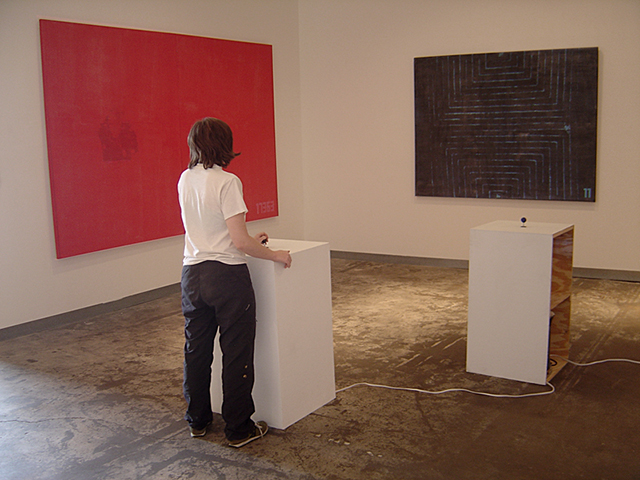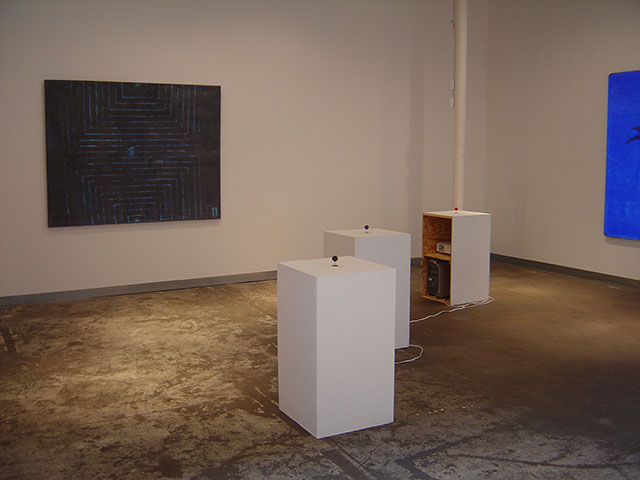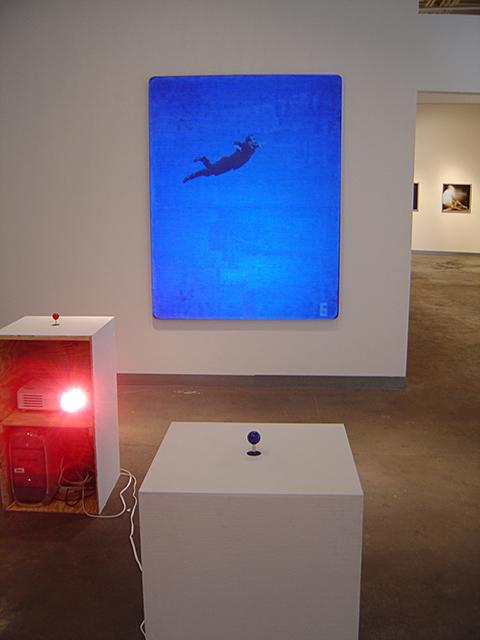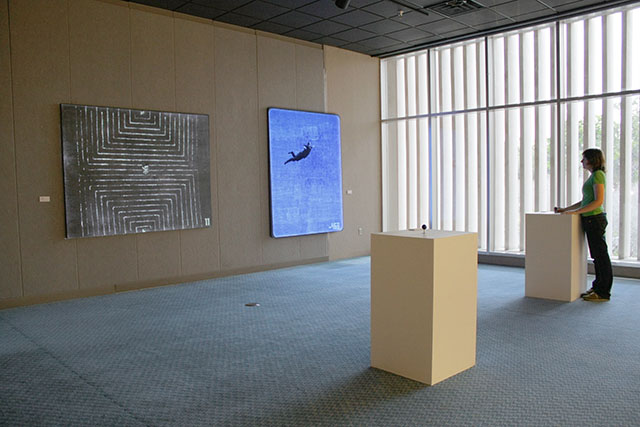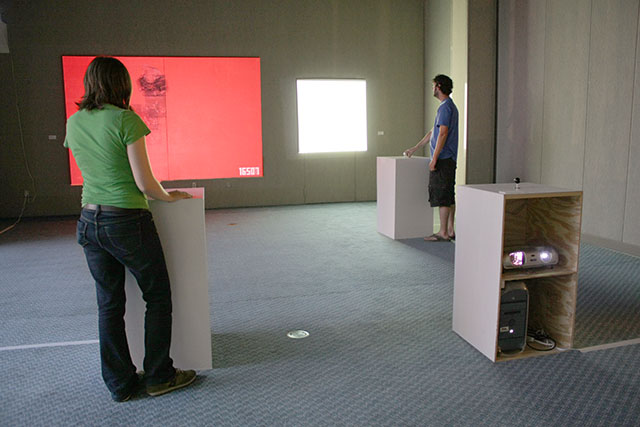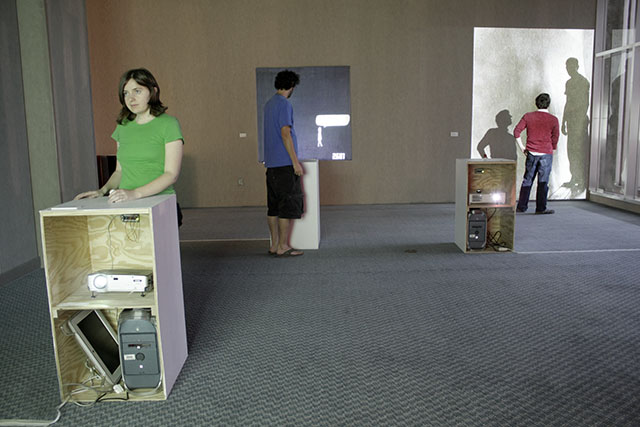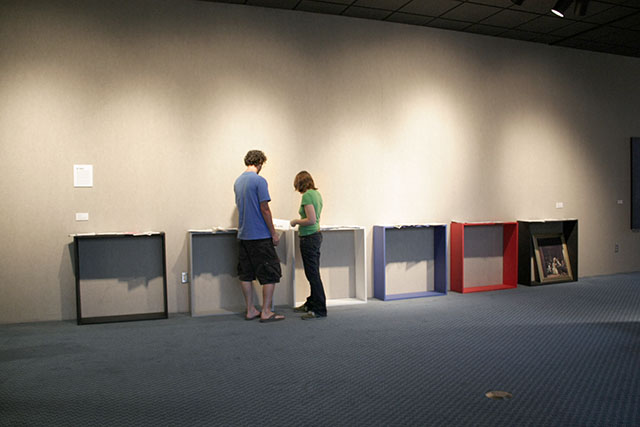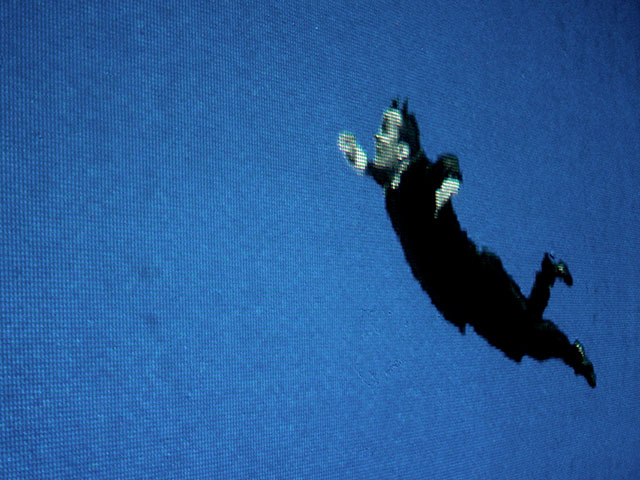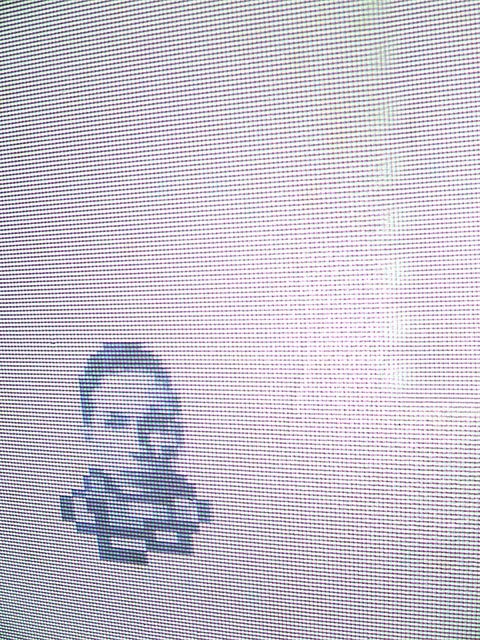
Project Description
In 2008 and 2009, I developed a series of videogames based on the monochromatic paintings of Ad Reinhardt, Jackson Pollock, Robert Rauschenberg, Frank Stella, Yves Klein, and Andy Warhol. Each game was designed to be projected and played on top of the original paintings by these five artists—tactical media for institutional interventions in museums of modern art. Modeled after Reinhardt’s juxtaposition of stark, black monochromes and wry, pedagogical comics, these Art Games stage confrontations between artist and artwork, inviting the audience to mediate the play between painter and painting.
By removing traditional gameplay from arcade games and adding the avatars and actions of mid 20th-century artists onto their own colorfields, these “painting-specific” installations adopt the strategies of so-called “art games” to make game art. As a historical genre of individually-authored and independently-produced games, “auteur,” “arthouse,” or “art” games typically emphasize the formal procedures of videogames to allegorize social, political, or economic concepts. Art Games deploy this strategy in the context of art institutions, recasting the formalism of post-war art as a blank canvas for the phenomenal, performative, and practical play.
In his analysis of Las Meninas (1656) in The Order of Things (1970), Michel Foucault writes “[p]erhaps there exists, in this painting by Velazquez, the representation as it were, of Classical representation, and the definition of space it opens to us.” Modeled after Las Meninas, Art Games conflates the position of the artist, the artwork, and the audience. Standing in front of a minimal plinth, projecting images onto the surface of a monochromatic screen, play becomes a critical form of practice.
Exhibited at the H. Don and Connie J. Osborne Family Gallery in Omaha, Mason Murer Fine Arts in Atlanta, the Tallahassee Museum of Fine Arts, and in a solo exhibition at the J. Wayne Reitz Union in Gainesville, Florida between 2009–2010.
Play the Games
Exhibition Schedule
- Game Play, Juror: Echotrope, H. Don and Connie J. Osborne Family Gallery, Criss Library, Omaha NB (April 19 - May 21, 2010)
- Fresh Blood, Mason Murer Fine Arts, Atlanta GA (August 14 - September 11, 2009)
- FloCAS '09, Juror: Libby Lumpkin, Museum of Fine Arts, Tallahassee FL (July 6 - September 20, 2009)
- Art Games (solo), The Gallery at the Reitz Union, Gainesville FL (February 16 - March 7, 2009)
Technical Description
Each game consists of two parts: a monochromatic screen, a minimal arcade console. All equipment is provided by the artist with simple, remote-controlled operating procedures. The thin, white pedestal (approximately 1.5' x 1.5' footprint) is installed between 10 and 15 feet away from the hanging monochrome (treated with reflective glass beads) and works best when not lit directly by gallery lighting. All components are stored within the pedestal from which the joystick extends in the fashion of a classic arcade machine. Controlled via joystick, a small computer running the program outputs fullscreen imagery to a digital projector. The computer and projector require only an AC power source to run the artwork autonomously.
At Mason Murer
in Atlanta, GA on August 14 to September 11, 2009
At the J. Wayne Reitz Union
in Gainesville, FL on February 16 to March 7, 2009

